
Welcome back to Flexibility Is Freedom!
If you feel like the world is about to end (amid the non-stop COVID-COVID-COVID news cycle), you're definitely not alone.
At times like these, I think it's helpful to remember that the Earth will continue to revolve around the Sun... life will continue, with a few adjustments, but continue nonetheless.
In October, TheDermDetective.com performed very well - setting a new record for revenue at $1,167 (when, as you may recall, Amazon Associates slashed commission rates by more than 50%).
In addition, most of the recent gains were driven by non-Amazon affiliate programs, with my overall exposure to Amazon Associates dropping to 44% vs. 63% last month.
In this month's income report, I'll discuss the drivers of recent business performance, my new experience with outsourcing, and a few other items.
Overall, revenue increased 76% MoM while sessions only increased 9%, which means the primary driver of revenue growth was higher profitability.
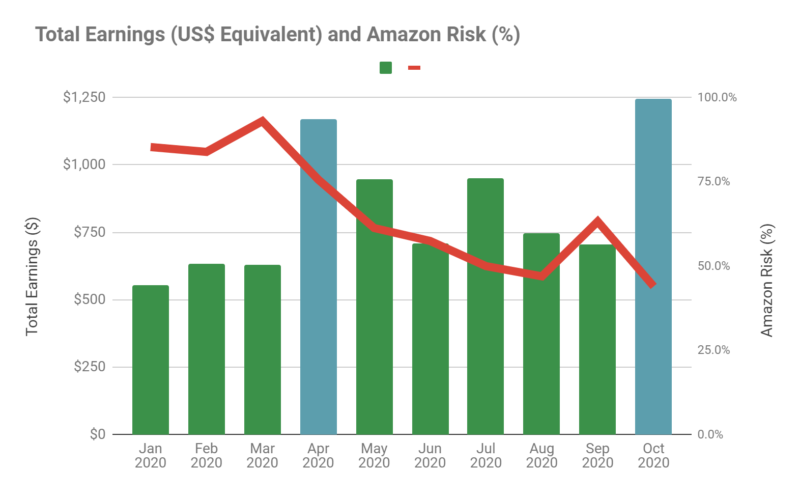
As you can see in the chart below, RPM (red line) increased substantially due to a greater contribution from more profitable (higher EPC) non-Amazon affiliate programs.
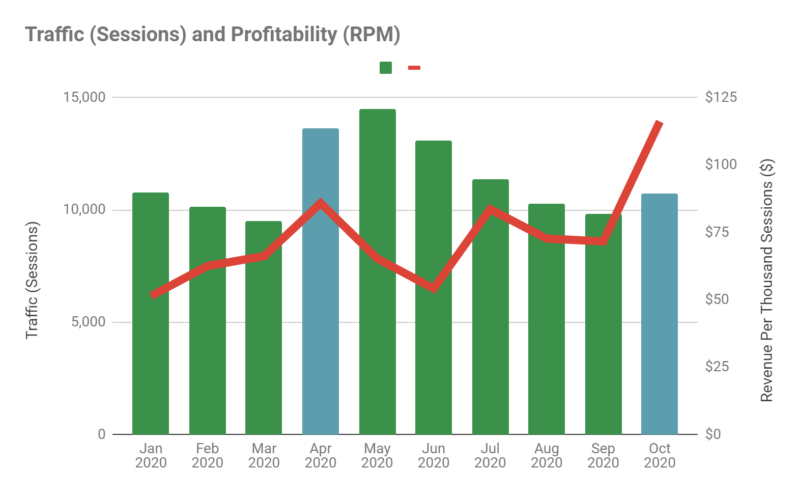
I'm cautiously optimistic about this month's performance as I know it can swing back down again. In addition, there were a few big commissions that really drove the outperformance and these could always be reversed next month (customer refunds).
Yup, I've finally done it! After months of talking about it, I finally pulled the trigger on it.
I wanted to start small so I went with a virtual assistant (VA) agency called TaskBullet (btw, this is an affiliate link) that lets me assign tasks to one of their pre-screened VAs.
I also placed my first content order with SEOButler (where I've been buying backlinks) to explore the possibility of outsourcing affiliate content.
Before I can hand off any tasks to my VAs or agency writers, I need to create a clear set of instructions for them to follow, a.k.a. standard operating procedures (SOP).
I considered using a SaaS tool to document my SOPs (like Process.St) but decided it wasn't worth the monthly cost. Instead, I'm using Dynalist to create and maintain my SOP documents.
I also created video tutorials using Loom (100 free videos, 5 minute limit) as an effective way of demonstrating the SOP and providing instructions. I found that this is an amazingly efficient way to communicate as it's easier to understand and faster to create.
I wanted to hire a VA for 2 main reasons:
There's a few different ways to hire a VA:
Ultimately, I decided to go with a VA agency because it's the most flexible and convenient option.
At this point, I'm not ready to hire a VA as I don't have a steady stream of work for them.
In addition, I'd have to hire and train them, and take the risk of hiring the wrong person or someone who doesn't perform well.
On the other hand, outsourcing an individual task is very time-consuming for repetitive or recurring tasks as you need to continuously find sellers and wait in their project queue.

While there are a number of different VA agencies, I ultimately chose TaskBullet because of:
So far with TaskBullet, I've been pretty happy with my VA's performance. I gave him an SOP, along with video instructions, and sent him small batches of work at a time.
The first time, he made a few mistakes (which is expected, of course!) and we discussed it on the phone and over messages on Basecamp (a remote working software).
I was really impressed by my VA's professionalism and eagerness to learn & improve.
He's now working on the third batch and has gotten good at the process with minimal errors.
My next step is to identify more low value tasks, such as product research, and outsource them.
Up until now, I have not tried using an agency writer yet. I know lots of other guys use agency or dedicated writers to produce content as it's far more scalable than writing it yourself.
However, I think there are many important differences between agency writing and "blog" writing (which is what I do), including:
Overall, I find that agency or dedicated writers tend to be used more by websites with lower quality and mass produced affiliate content. When you read the actual articles, it becomes clear to any native English speaker that it's not a "quality" product, but something that's just "passable" in terms of being English and grammatically correct.
Anyways, when my first order came back, I was not super impressed with it, for some of the reasons that I outlined earlier (substance, tone & style, incentives). The content itself was very "salesy" and lacked both topical expertise and brevity.
It reminded me of those group projects during my days in business school when I had to edit my group member's work, and sometimes you can't even work with what they wrote and you have to rewrite their part entirely.
I ended up using a little less than 50% of what the writer wrote and had to edit that 50% a fair bit. I liked that the writer did a bit of research and followed my SOP relatively well. However, I just couldn't use her final copy as it really did not fit with my brand's tone and brand.
You win some, you lose some, I guess.
I paid 8.5 cents per word (SEOButler gave me a 15% discount on 10 cents per word).
For a 1,500 word article, this worked out to $127.50 (which I think is a bit too expensive).
Ultimately, I'll have to outsource content at some point. This first attempt did not go as well as I had hoped but I'll adjust my SOP to provide future writers with clearer instructions.
In addition, I don't think agency writers are the best solution for my situation because there's isn't really a feedback mechanism as you're not guaranteed to work with the same writer.
Going forward, I'll continue to produce content myself but explore hiring a dedicated writer who can create content to meet my quality standards and brand.
Last month, I talked about starting an email list using a lead magnet strategy.
A lead magnet is something that you offer the reader in exchange for their email address, such as a free PDF guide or an exclusive discount (for e-commerce websites).
In this case, I created a PDF guide on how to take care of your skin during a pandemic using Beacon.by (I snagged the AppSumo lifetime deal earlier this year).
Beacon is kind of like Canva (drag-and-drop design tool) but specifically for lead magnets and also comes with a few options to implement a basic email opt-in form.
For example, here's a sticky footer bar opt-in form:
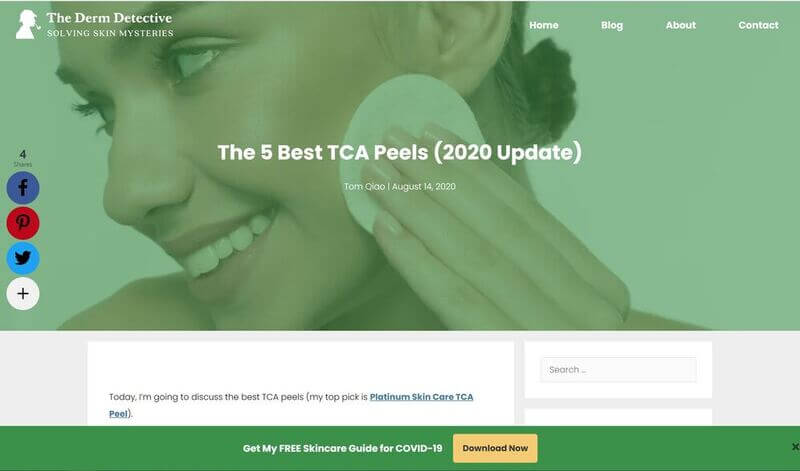
And when you click on it, a pop-up form shows up:

For sending the emails themselves, I'm using SendFox (I max'd out AppSumo codes for a lifetime plan of 25,000 subscribers). I also created a Smart Page with SendFox:

So far, I have not actually created any email sequences yet.
The conversion rate, however, has been very low (<1%).
One possible solution is to use more sophisticated opt-in forms like OptinMonster.
So far, I have collected 20 email subscribers. Not much, but it's a start!
Another one of my outstanding "to-do's" is to better understand my audience:
Using the data I've collected in Google Analytics, I can now easily answer these questions!
Under Audience -> Demographics, I can see the distribution of age groups and gender:
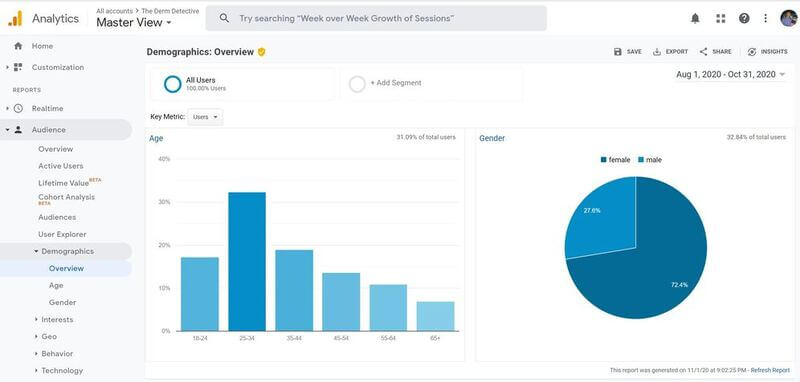
Somewhat to my surprise, most of my audience is actually around my age, with ~50% under the age of 34 (18-24 group: 17%, 25-34 group: 32%).
The remaining 50% is spread across older age groups and decreases with age. This pattern may reflect the overall usage of the Internet to some degree as well.
I previously assumed that my typical reader was an older woman, maybe 30-50s, so this new insight is really helpful for producing the right content and setting the right tone.
Unsurprisingly, 72% of readers are female and 28% are male. I would have actually expected a more overwhelming female distribution (90%+) so this was an interesting observation as well.
Next, under Audience -> Interests, Google has created these "visitor profiles" to describe the interests and preferences of different users.
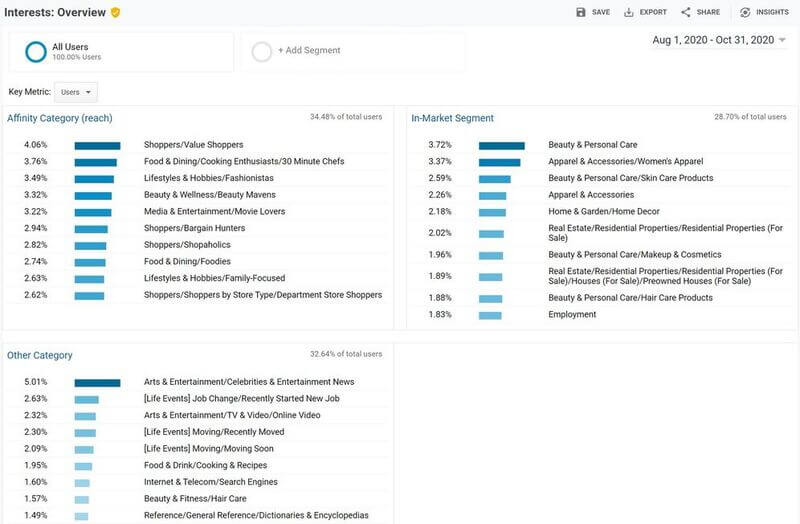
I don't know how Google defines these categories, but the most popular ones were:
Affinity Category
In-Market Segment
Overall, I didn't draw any major conclusions from this data.
It showed me that my readers are: i) shoppers, ii) interested in skincare / beauty, and iii) have secondary interests in related topics like fashion, media, cooking, home & garden.
The last report I looked at was Audience -> Geo -> Location.
I won't copy and paste the chart here because the numbers are too small to read. However, these are the top 10 countries by users:
This report was really interesting and contained a few very actionable insights:
Previously, I focused on geographies like Europe (UK is a huge driver, but France / Germany / Spain / Italy - not so much), Japan (I earned like 150 yen in one month, crickets since then), Brazil / Mexico (not seeing any traffic from them), and India (I think there's a lot of potential here, however, I've only earned ~$10 USD from Cuelinks).
Now, I see that Singapore could be a good source of income (signed up for Amazon Associates SG).
I believe Malaysia and Philippines users will get redirected to Amazon Singapore (or Australia).
The last two countries are not monetizable at this time. Amazon has a UAE program but it requires a local bank account in UAE, Egypt, or Saudi Arabia.
Finally, I'm very excited about a new review format that I'm piloting out:
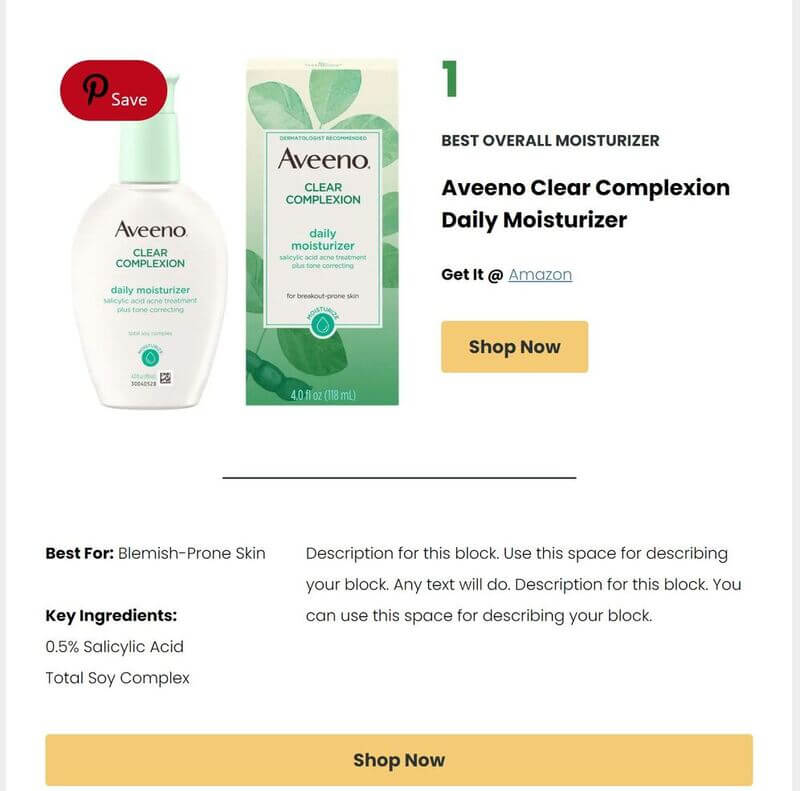
And here's an example of the old format:
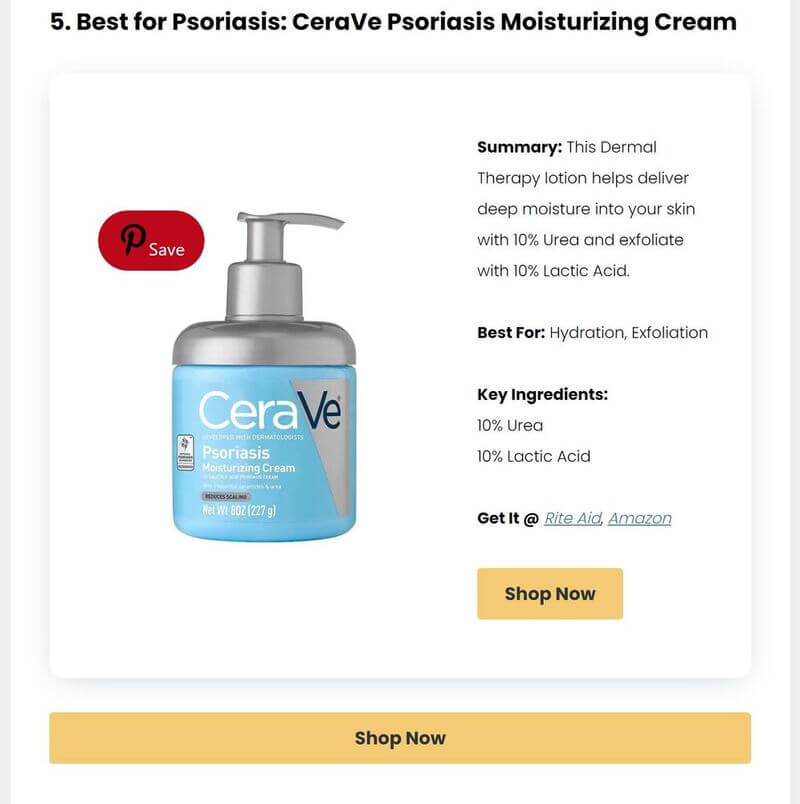
This new format is cleaner, more modern, and includes more ways to convert users than the previous format. For each product, there are 4 ways for a user to visit Amazon:
I was inspired by the format of bigger competitors that typically write a short summary of each product rather than an in-depth review.
I'm thinking that's a better approach than my current philosophy which is to provide enough info to help readers make a decision.
In most cases, people just want a suggestion when they search for "best" keywords and are going to do their own research afterwards anyways.
With this new format, I'll include more products than before while keeping each product review relatively brief and to the point.
I think this strategy could lead to an even higher conversion rate.
As 2020 nears its end (what a freakin' year, eh?), I'm thinking about the future as well, both for my current business and the next stage of my life.
I'm planning to create a second website / digital asset in the near future and document the entire process in a YouTube series on my channel Flexibility Is Freedom.
During this "lockdown" period, I think there's a lot of people who'd be interested in building an online business and making an extra $200, $500, or even $1,000 a month in side income to supplement their regular income, savings, or perhaps as their primary income because they've been laid off, furloughed, or had to close their business (like lots of restaurants, gyms, etc.).
I'm excited to bring this idea to life, as i) it could help many people make a bit of money during this challenging time, which is the best thing that I can personally do to help others right now, and ii) it's a great way to build my second website because it'll require me to build a repeatable process and explain that process to beginners, which is one of the best ways to learn it myself.
Alright, that's it for this month's income report! Take care of yourself, your family, and remember that the Earth will continue to revolve around the Sun!
To Flexibility and Freedom,
Tom